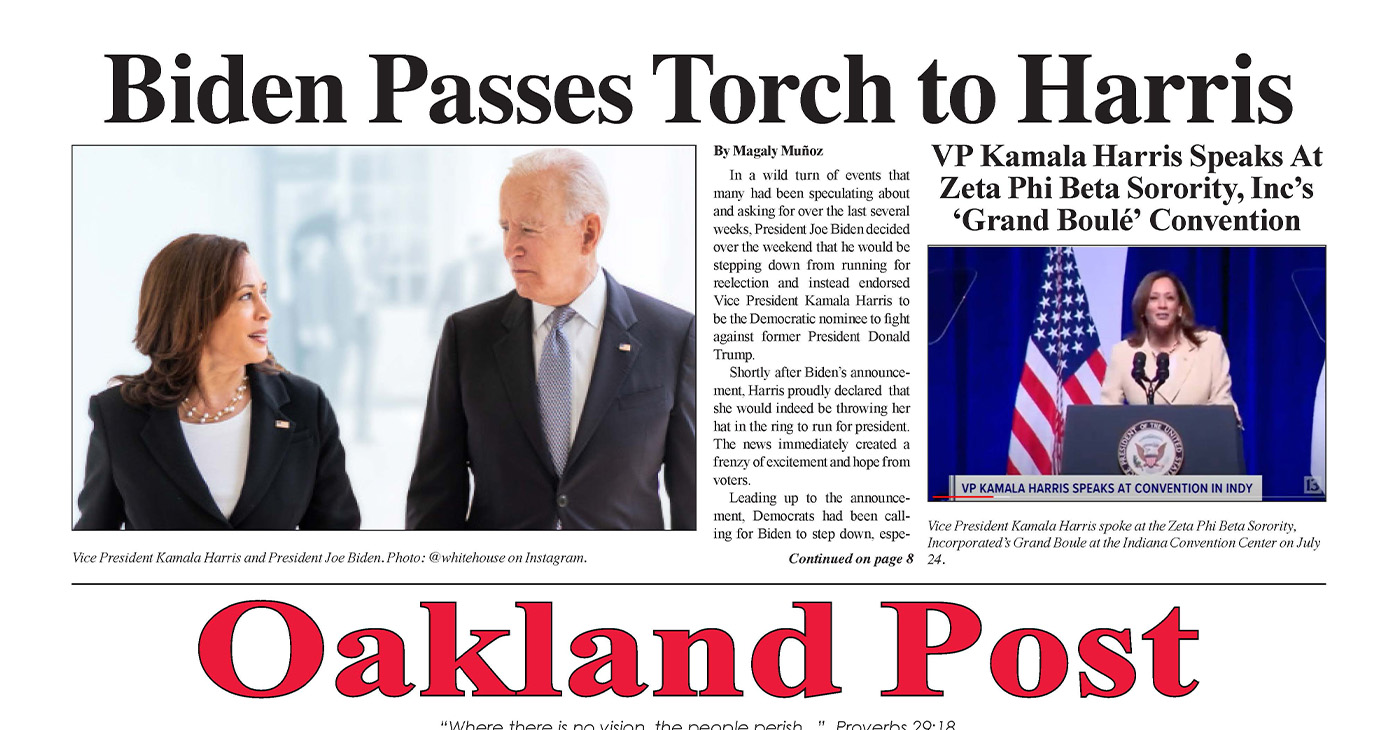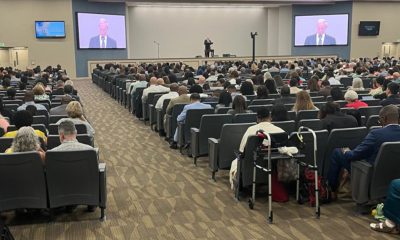Activism
California Pushes Back on Judge’s Decision to Outlaw State’s Ban on Assault Weapons
According to Statista Research Department, California had a total of 22 mass shootings between 1982 and 2021.

California Gov. Gavin Newsom and Attorney General Rob Bonta announced last week that the state has appealed a federal court’s decision that declared California’s ban on assault weapons unconstitutional.
Several state officials, including San Francisco Mayor London Breed, also shared their disagreement with the court’s ruling during a press conference held at the Zuckerberg San Francisco General Hospital. The state partnered with a number of gun control advocate groups for the event, including the Brady Center to Prevent Gun Violence and the Giffords Law Center.
“We can agree that the decision was disappointing,” said Bonta. “In many ways, the opinion was disturbing and troubling and a big concern, but we cannot be, and we are not, deterred by this,” he said.
Federal Judge Roger Thomas Benitez presided over the decision in Miller v. Bonta. The case was heard at the United States District Court for the Southern District of California.
Bonta said his office has appealed the decision, requesting that the U.S. Court of Appeals for the Ninth Circuit leave the current laws in effect for 30 days.
California’s gun laws are some of the strictest in the nation under the Roberti–Roos Assault Weapons Control Act of 1989 (AWCA) which bans the use of specific models of firearms classified as assault weapons.
In the pending court case Miller v. Bonta, James Miller, a lawyer who serves as a board member of the San Diego County Gun Owners, advocated for the use of the AR-15 rifle. However, the semiautomatic rifle with certain features is an illegal assault weapon according to California gun laws.
Miller argued that AR-15 rifles can be used for self-defense under the second amendment. Miller, who also serves on the Cajon Valley School Board, initially challenged former Attorney General Xavier Becerra on California’s criminalization of AR-15 rifles in April this year.
The ongoing case, which Bonta inherited, sparked heated debates about gun laws in the wake of increasing gun violence and mass shootings.
Breed recalled her personal experience with gun violence growing up in the Bay Area.
“We’re here at San Francisco General Hospital. I can’t tell you how many times I’ve been here after a friend that I grew up with was shot,” she said.
Breed was joined by Mattie Scott who lost her son to gun violence. The mayor grew up with Scott’s son who was killed in 1996 at a graduation party in San Francisco.
“We don’t want to see another person, another child lost to gun violence in this city in this state in this country,” said Breed.
“We’ve had a law on the books in the state for over 30 years, and a judge decides that our law is no longer constitutional. That law has saved countless numbers of lives,” she said.
According to Statista Research Department, California had a total of 22 mass shootings between 1982 and 2021. In the court decision, Benitez compared the effectiveness of an AR-15 rifle to a Swiss Army Knife. Based on the federal court’s ruling, the semiautomatic machine gun is, “Good for both home and battle,” said Benitez.
“Like the Swiss Army Knife, the popular AR-15 rifle is a perfect combination of home defense weapon and homeland defense equipment,” the federal judge said in favor of Miller.
Although the murder of Scott’s son remains unsolved, she is an avid activist for social justice related to gun violence.
“The judge who issued this decision is wrong,” said Scott. “It is insulting to read his decision when he called the kind of weapon that killed my son akin to a pocketknife,” she said.
“Pocket knives don’t tear families apart. They don’t shoot up schools, churches, movie theaters, and street corners,” she said in reference to the recent mass shootings across the country.
Contrary Benitez’s belief that AR-15 rifles can be compared to pocket knives, trauma surgeon Dr. Andre Campbell said that the semiautomatic rifle is a lethal assault weapon designed for the battlefield.
“An AR-15 is a weapon of mass destruction. It is used in the battlefield to kill the enemy. It’s a gun that is used in warfare and should not be available or used in the streets of the United States,” said Campbell.
Campbell has treated many bullet wounds on the frontlines of trauma care for more than two decades and has witnessed the devastation a single bullet can cause to the human body.
“It is as if a bomb went off in the tissues of patients,” said Campbell describing the impact of an AR-15 bullet in patients he’s treated over the years.
Giffords Law Center Executive Director Robyn Thomas said that the federal judge’s decision to give civilians access to military-grade weapons sets California’s gun laws back by 32 years.
“The decision is not based on the correct interpretation of the law,” said Thomas. “The comprehensive gun regulation which we have pioneered here in the state is protecting the lives of Californians. It is making us safer,” she said.
In its budget for 2021-22, the state has allocated $200 million for the California Violence Intervention and Prevention Grant Program. The investment was set up to prevent gun violence in high-risk communities statewide.
“Folks that wax on about public safety and (then) they sit back passively and say nothing about this outrageous decision. Shame on them. What frauds,” said Newsom.
The governor urged lawmakers to evaluate the absurdity of the court’s decision to justify the personal use of a rifle that is, “nothing more than a weapon of war,” he said.
The governor said that gun control has always been a bipartisan issue that helped California lawmakers enact, “progressive and aggressive,” gun safety laws that regulated the people’s right to bear arms for over three decades.
Activism
Oakland Post: Week of July 24 – 30, 2024
The printed Weekly Edition of the Oakland Post: Week of July 24 – 30, 2024

To enlarge your view of this issue, use the slider, magnifying glass icon or full page icon in the lower right corner of the browser window. ![]()
Activism
Oakland Post: Week of July 17 -23, 2024
The printed Weekly Edition of the Oakland Post: Week of July 17 -23, 2024

To enlarge your view of this issue, use the slider, magnifying glass icon or full page icon in the lower right corner of the browser window. ![]()
Activism
Community Celebrates Historic Oakland Billboard Agreements
We, the Oakland Billboard Economic Development Coalition, which includes Oakland’s six leading community health clinics, all ethnic chambers of commerce, and top community-based economic development organizations – celebrate the historic billboard agreements approved last year by the Oakland City Council. We have fought for this opportunity against the billboard monopoly, against Clear Channel, for five years. The agreements approved by Council set the bar for community benefits – nearly $70 Million over their lifetime, more than 23 times the total paid by all previous Clear Channel relocation agreements in Oakland combined.

Grand Jury Report Incorrect – Council & Community Benefit
We, the Oakland Billboard Economic Development Coalition, which includes Oakland’s six leading community health clinics, all ethnic chambers of commerce, and top community-based economic development organizations – celebrate the historic billboard agreements approved last year by the Oakland City Council. We have fought for this opportunity against the billboard monopoly, against Clear Channel, for five years. The agreements approved by Council set the bar for community benefits – nearly $70 Million over their lifetime, more than 23 times the total paid by all previous Clear Channel relocation agreements in Oakland combined.
Unfortunately, a recent flawed Grand Jury report got it wrong, so we feel compelled to correct the record:
- Regarding the claim that the decision was made hastily, the report itself belies that claim. The process was five years in the making, with two and a half years from the first City Council hearing to the final vote. Along the way, as the report describes, there were multiple Planning Commission hearings, public stakeholder outreach meetings, a Council Committee meeting, and then a vote by the full Council. Not only was this not hasty, it had far more scrutiny than any of the previous relocation agreements approved by the City with Clear Channel, all of which provide 1/23 of the benefits of the Becker/OFI agreements approved by the Council.
- More importantly, the agreements will actually bring millions to the City and community, nearly $70M to be exact, 23 times the previous Clear Channel relocation agreements combined. They certainly will not cost the city money, especially since nothing would have been on the table at all if our Coalition had not been fighting for it. Right before the decisive City Council Committee hearing, in the final weeks before the full Council vote, there was a hastily submitted last-minute “proposal” by Clear Channel that was debunked as based on non-legal and non-economically viable sites, and relying entirely on the endorsement of a consultant that boasts Clear Channel as their biggest client and whose decisions map to Clear Channel’s monopolistic interests all over the country. Some City staff believed these unrealistic numbers based on false premises, and, since they only interviewed City staff, the Grand Jury report reiterated this misinformation, but it was just part of Clear Channel’s tried and true monopolistic practices of seeking to derail agreements that actually set the new standard for billboard community benefits. Furthermore, our proposals are not mutually exclusive – if Clear Channel’s proposal was real, why had they not brought it forward previously? Why have they not brought it forward since? Because it was not a real proposal – it was nothing but smoke and mirrors, as the Clear Channel’s former Vice President stated publicly at Council.
Speaking on behalf of the community health clinics that are the primary beneficiaries of the billboard funding, La Clinica de la Raza CEO Jane Garcia, states: “In this case, the City Council did the right thing – listening to the community that fought for five years to create this opportunity that is offering the City and community more than twenty times what previous billboard relocation agreements have offered.”
Oakland Billboard Economic Development Coalition
| Native American Health Center | La Clínica de la Raza | West Oakland Health Center |
| Asian Health Services | Oakland LGBTQ Center | Roots Community Health Center |
| The Unity Council | Black Cultural Zone | Visit Oakland |
| Oakland African American Chamber of Commerce | Oakland Chinatown Chamber of Commerce | Oakland Vietnamese Chamber of Commerce |
| Oakland Latino Chamber of Commerce | Building Trades of Alameda County | (partial list) |
-

 Arts and Culture3 weeks ago
Arts and Culture3 weeks agoRooted in Tradition: The Intricate History of Black Hair Braiding
-

 Bay Area4 weeks ago
Bay Area4 weeks ago“I Will Not Be Bullied,” Says Oakland Mayor Sheng Thao
-

 Bay Area2 weeks ago
Bay Area2 weeks agoPG&E Increases Rates While Bay Area Households Are Struggling to Stay Afloat
-

 Business3 weeks ago
Business3 weeks agoGov Newsom: Raising Fast Food Minimum Wage to $20 Pays Off as Jobs Multiply in Industry
-

 Activism4 weeks ago
Activism4 weeks agoOpponents of Mayor Sheng Thao Are Calling on Her to Resign Following FBI Raid
-

 Community1 week ago
Community1 week agoHundreds Come to Jehovah’s Witnesses’ Assembly Hall for Three-Day Program of ‘Good News’ in Fremont
-

 Bay Area2 weeks ago
Bay Area2 weeks agoJuneteenth Mass Shooting Suspect Charge with Multiple Counts of Felony Assault by Alameda County DA Pamela Price
-

 Activism4 weeks ago
Activism4 weeks agoOakland Coliseum Sale to AASEG: A Model for Community Development and Inclusion



















































